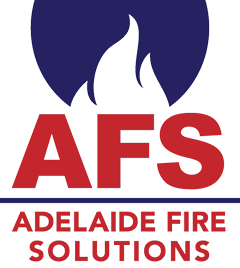Preventing fire in workplace includes some simple steps like switching off or unplugging electrical equipment when not in use, keeping all flammable or combustible materials in a safe place, or never leaving smouldering cigarette butts in the smoking areas.
All your employees need to be trained in fire safety procedures and aware of fire risks and hazards. Many hazards can be identified just by listening to your employees.
The most dependable way of keeping your workplace fire safe is to carry out regular fire risk assessments. It allows you to:
assess the likelihood of a fire starting in the workplace;
find sources of ignition, fuel, and oxygen;
identify all people - employees, tenants, residents, customers, visitors, or contractors - potentially at risk; and
predict consequences to people from a fire starting in the building.
Fire risk assessment includes reviewing the current fire safety measures to make sure that they are adequate or if they need to be updated. Workplace environments change constantly and as a result safety systems and procedures evolve as well.
Identifying fire hazards and the level of risk they can cause is the first step. In the fire safety industry "hazard" is defined as something that could cause fire, and "risk" means the likelihood of harm to people, property, and the future of business. Understanding the difference between these two terms is essential to conducting the risk assessment correctly.
The next step included evaluation of the risks and creating a strategy to lessen the risks. If possible, the hazard should be removed, for example, by fixing faulty electrical equipment. If removing the hazard is not possible, isolating it may be the next best solution (for example, moving flammable liquids to a secure location).
Controlling the hazard and protecting people from the hazard must be implemented as safety measures when the hazard cannot be removed or isolated.
Before you can evaluate the risks and decide on control measures you need to decide who might be harmed in case of fire. In a small workplace with just a few employees the emergency plan may be very simple. A plan that includes members of the public – especially children, seniors or people with disabilities who may need assistance during an emergency – needs to be more detailed.
Depending on the level of risk the remedial measures need to be prioritised from high that need to be implemented as soon as possible to low that can take more time.
The final step is reviewing your fire risk assessment and updating it when necessary to reflect any changes to your workplace. You need to keep an accurate record of all your findings and the precautions implemented.
A fire risk assessment is essential not only for creating a safe and healthy workplace and reducing the level of accidents, but also for complying with law.
These short Fire Risk Assessment videos produced by 2020 Productions and the Scottish Centre for Healthy Working Lives may help you learn how to identify fire risk hazards.
For more information about fire safety and risks in the home and office, please read our other blog entries, and don't forget to browse our online store to see how we can help you with affordable fire equipment to improve your fire safety, including fire extinguishers, smoke alarms, fire blankets, hose reels and more.
